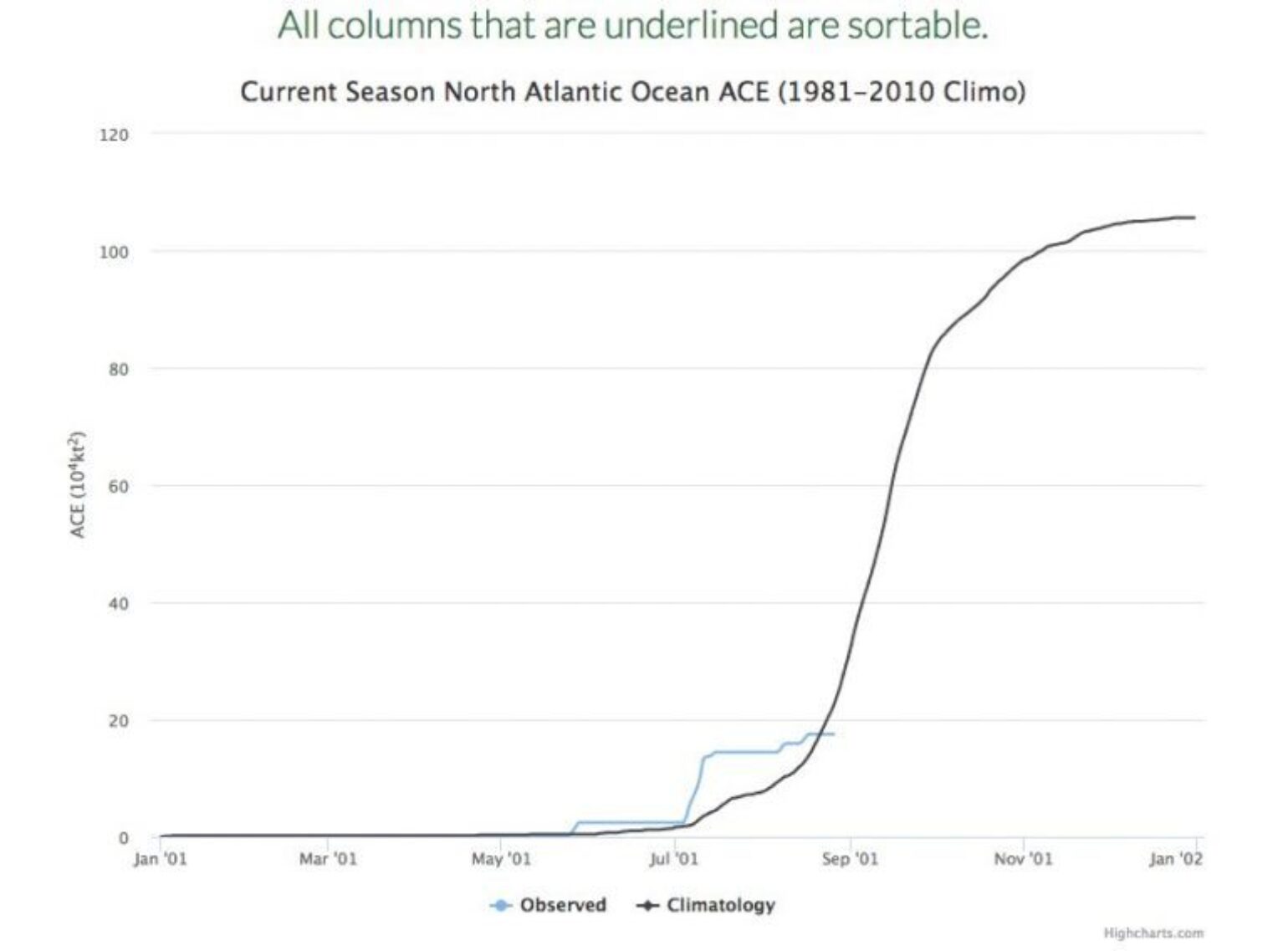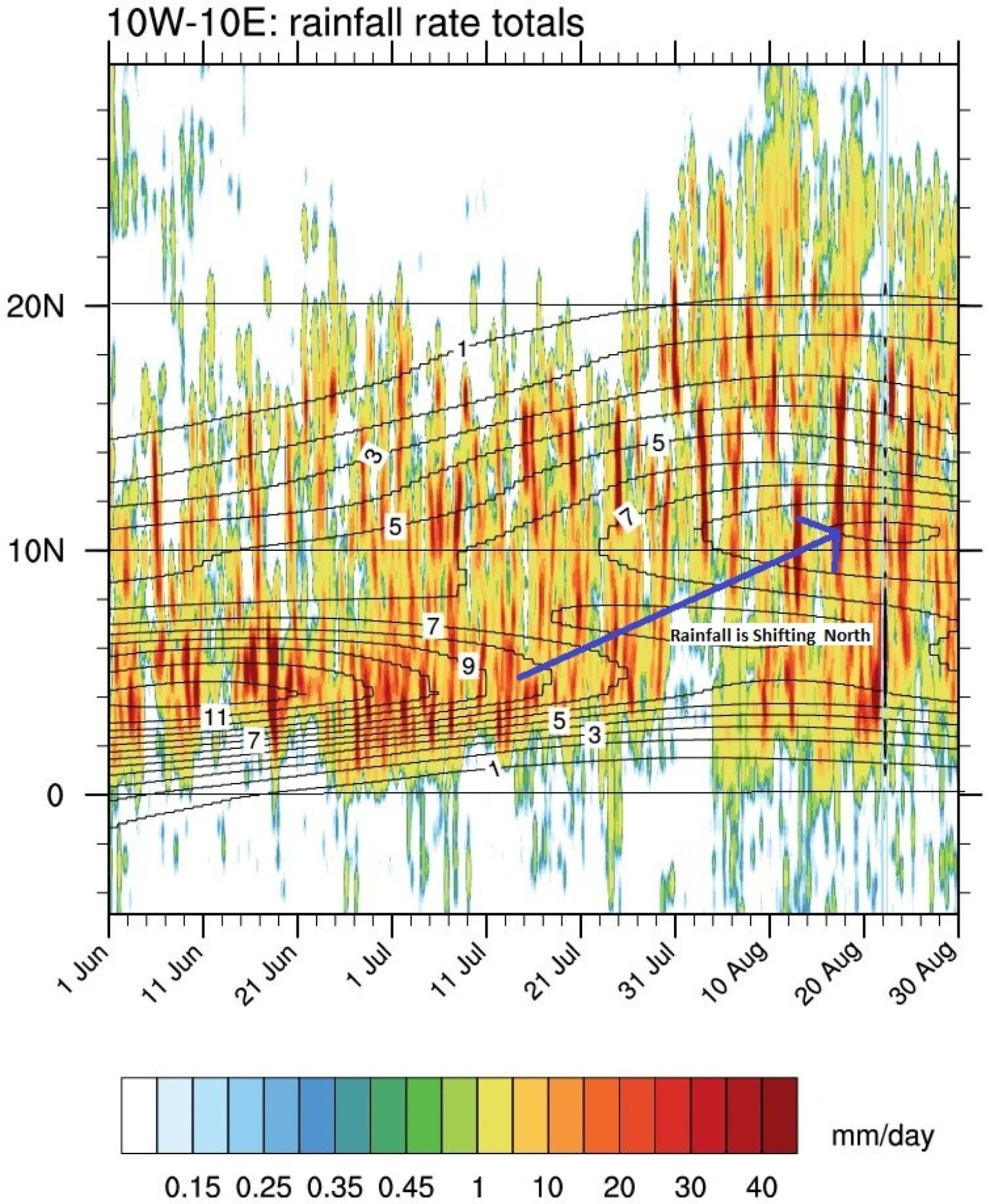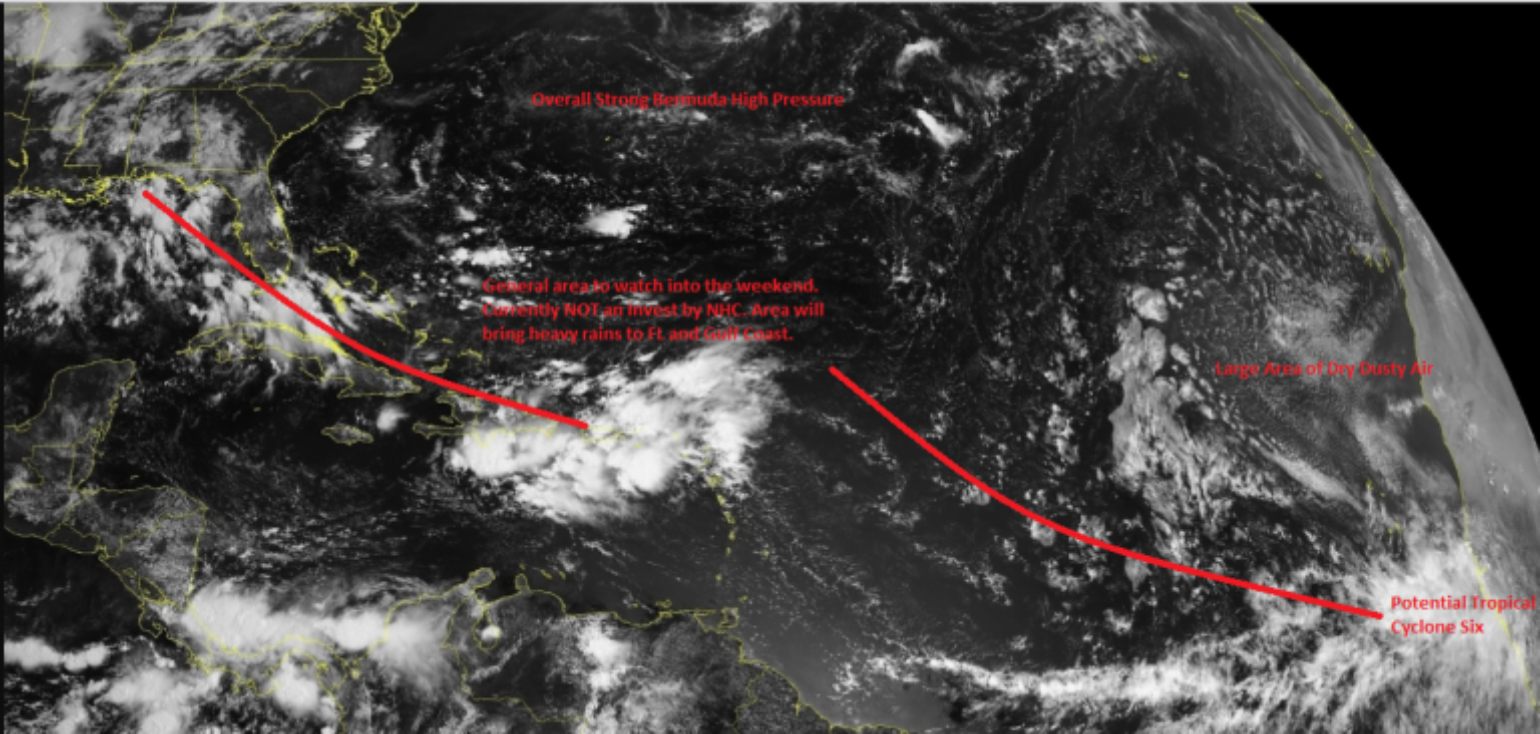The Peak Is Here
The threat posed by Hurricane Lane to much of Hawaii last week, in addition to the seemingly endless recent hurricane landfall anniversaries, are great reminders that there are insurable hurricane risks even though the Atlantic Basin has been quiet so far this year. However, there are signals suggesting that the Atlantic Basin hurricane risk is about to change, but not because it’s the natural climatological peak of the season, which, as mentioned, will occur over the next six weeks.
It is hard to believe that with only five named storms thus far, the start of the season has actually been above-average in terms of Accumulated Cyclone Energy (ACE) and named storm formation. Despite the recent drop of the seasonal ACE to below average after a quiet latter half of July and front half of August, the Atlantic Basin is now in a period where the daily ACE increases exponentially until the middle of October.

As we approach the peak of the season, the West African monsoon is a source for seedlings of named storm activity over the Atlantic Basin. Although there is still a persistent area of dry, dusty air known as the Saharan Air Layer which has been, up to this point, a negative influence on named storm formation in the Main Development Region (MDR), the monsoon seems to be finally transitioning into a mature phase. The Gulf of Guinea phase is ending, with a northward shift in precipitation across the sub-Saharan zone. This suggests that Africa is moving into a seasonal state that favors easterly wave development. In order for these waves to develop into named storms, however, favorable conditions over the ocean need to be present.

With a favorable easterly wave development now emerging for the first time this hurricane season, the MDR’s Sea Surface Temperatures (SST) are running above average. The Caribbean wind shear is also now near average. This all suggests a more favorable environment for named storm formation going forward.
The other reminder that there could be more activity ahead is the seasonal forecast. As shown by Colorado State University (CSU) and other agencies, the current forecast indicates greater activity; just because it has been a quiet August does not mean it will be a quiet September. As an example, the hurricane season of 1961 had zero Atlantic named storms in August, but by the end of September, four major hurricanes formed across the basin. The CSU biweekly forecast calls for average activity at a minimum over the next two weeks and, therefore, given that it is the peak of the season, the insurance industry should expect some named storm activity across the Atlantic Basin during this same timeframe.
September Forecast and Expected Impacts:
In the last week, the long-range forecast models have suggested the next named storm, Florence, may form off the Coast of Africa. The National Hurricane Center (NHC) has labeled this area Potential Tropical Cyclone Six due to its close proximity to the Southern Cabo Verde Islands. Another location the NHC is currently observing is near Hispaniola and the Leeward Islands. These areas of disorganized cloudiness could be in the Gulf of Mexico or Bahamas by this weekend. With two areas to watch, the insurance industry should remain vigilant for the next few weeks.
Potential Tropical Cyclone Six currently has a 90% chance of development over the next 48 hours, according to the NHC. The sooner this storm strengthens into a named storm, the more likely it will veer northward over the open water of the Atlantic. However, if it takes time to organize, it could track closer to the East Coast of the U.S. over the next 10 days, where the overall conditions are much more favorable for named storm development further to the west with much less shear and warmer SST. Currently, with about 25 degrees of longitudinal spread around 25 degrees north latitude, there is a considerable range in the model on the future track of Potential Tropical Cyclone Six, which is a result of Typhoon Jebi’s influence on the Northern Hemisphere jet stream. But, at this point, Bermuda has the highest probability of being influenced as opposed to the East Coast of the U.S.
Because the conditions are more conducive for named storm development closer to the U.S. coastline, the system currently tracking across the northern Caribbean may have greater significance to the insurance industry in the near term. The computer models suggest a tropical storm could develop this weekend. Right now the biggest impact appears to be heavy rainfall somewhere from south Florida to the Northern Gulf Coast early next week. For the most part, the models have backed off the scenario of a Category 1 hurricane developing, but there is considerable model spread at this time for a system that is not even labeled yet by the NHC.

Regardless of these two new areas to watch, the tropics are now going into an active phase. The long-range computer model forecasts are aggressively developing future tropical waves across the Atlantic MDR from African waves. This burst of activity that should start this weekend might begin an uptick in activity, as a large-scale Madden-Julian Oscillation (MJO) is forecasted to enter a phase that is more conducive for Atlantic activity over the coming weeks. We have already seen how the MJO has played a role in two separate activity increases so far this season. When you combine this with the warmer than normal SST off the East Coast and Gulf of Mexico and the position of the Bermuda high, the window is open to draw storms towards the East Coast if they develop during the middle part of September.Below is the ECMWF Ensemble Cyclone Tracks Forecast. Notice towards the end of the forecast the future low pressures coming off Africa stay further south. Source: Ryan Maue and WeatherModels.com
